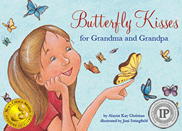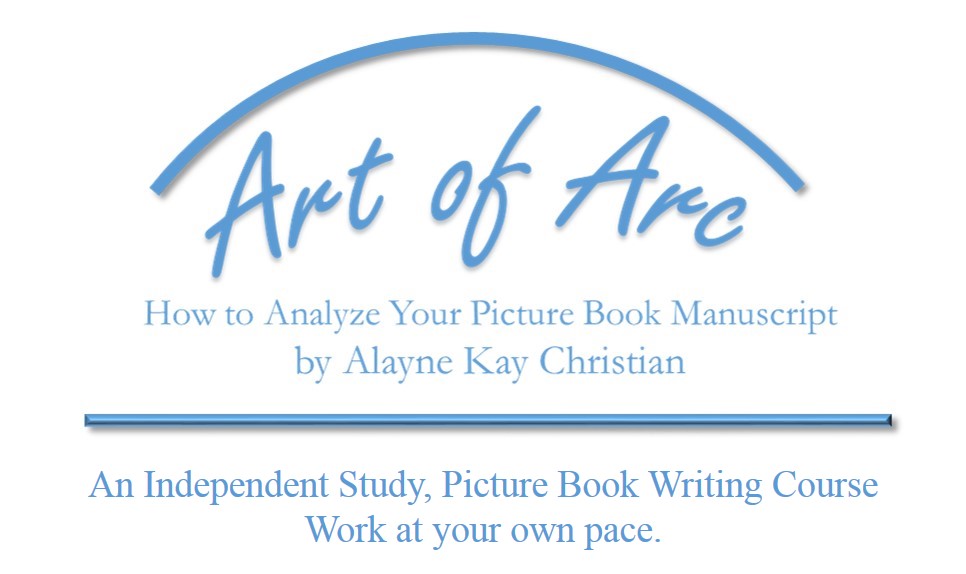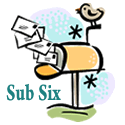 This month, I asked the All about Submissions team the following questions: How do you cope with rejections? What do you do with the rejection letters – even if they are just form letters? I shared some of our answers yesterday in Part One. Here are the remaining answers plus links to some excellent posts. Please feel free to comment and share your tips for coping with rejections. And remember, if you have questions you would like answered, either ask it in the comment section or contact me by clicking the “contact” button at the top of this page.
This month, I asked the All about Submissions team the following questions: How do you cope with rejections? What do you do with the rejection letters – even if they are just form letters? I shared some of our answers yesterday in Part One. Here are the remaining answers plus links to some excellent posts. Please feel free to comment and share your tips for coping with rejections. And remember, if you have questions you would like answered, either ask it in the comment section or contact me by clicking the “contact” button at the top of this page.
* * *
Teresa Robeson, author and artist
Rejections used to get me into a deep funk. I think that’s partly why I gave up writing for a while in the 2000s (that, combined with the stress of homeschooling two young kids during that period). I had some wonderfully encouraging, personalized rejections among the form ones, but it was still so depressing.
I think that, with age, I have grown a thicker skin and now rejections don’t bother me as much. They still do, but they don’t define my self-worth. Also, I’ve gotten fan letters and compliments (from readers and editors) on my published works, and that really helps to sustain me when I receive a rejection.
Because I’m semi-organized (more hypothetically than in practice), I save all my rejection letters in files, either real or virtual. I occasionally, like once every seven years, pull out the encouraging ones to look at, but I don’t do anything with them otherwise. No need to re-live the angst of the form rejections, and I hold the good ones in my heart anyway.
As much as rejections pain me, in today’s world of “we’ll reply only if interested,” I would rather receive a form rejection than no rejection at all!
* * *
Sophia Mallonée, Children’s Writer
Rejections suck. Yeah, your skin might grow a little thicker over time, but there really is no getting used to the rejection process.
For me, my coping mechanisms vary from rejection to rejection. The best rejections are the personalized ones. With those, I like to pick apart the letter and try to view my manuscript the way the agent or editor did. Can I utilize their advice? I’ll pour over my manuscript and try to find any weak links that I might be able to strengthen. I take these rejections as learning experiences. Yes, it still sucks to be rejected. But at least in these cases (most often) I’ve received a little bit of knowledge as a consolation prize.
It’s the form rejections that are the worst. It’s more difficult to take away a great lesson when you receive an “It’s wonderful…but just not for me” type of letter. That always stings. It’s like a breakup where you’re never able to say how you felt in the end, and the closure is never had. Why? Just give me something. If it’s so wonderful, then why is it not for you? It took me a while to let go of those rejections. But I get it. I know that a manuscript can be good and still not connect with you – I read stories like that all of the time – for no particular reason. I understand that to respond to every single query/submission would be a ridiculous waste of time. But still, just because I understand the rejection process, doesn’t mean I have to like it. I definitely allow myself to have a mini pity-party, followed by a phone call or lunch with my critique buddies, where we all commiserate. After that, I’ll write something new. Nothing makes me feel more accomplished and happy than diving into a new story.
I like to keep my rejection letters. I keep all of my electronic rejection letters filed away (even if they’re form) in my email. That way, if I query or submit to the same agent/editor again in the future, I can reference back to any correspondence we might have had in the past.
I don’t, however, keep any paper rejections unless they’re personalized and mailed to me. I don’t have the time or space for extra paperwork.
I’ll mention that I also have a running “Submission Tracking” spreadsheet that I maintain. I track all letters received, dates and any specific notes next to the agent/editor info on this sheet. That way, even if I don’t have the letters themselves, I’m still able to reference specifics quickly.
* * *
Cindy Williams Schrauben, Children’s Writer
Raising Book Monsters – kids who devour books and hunger for knowledge
http://www.RaisingBookMonsters.com
What do I do with form rejections? I log them (on my submission spreadsheet) and forget them. Done.
How do I cope with rejections? This question sounds very straight forward, but there are many variables. I can say, though, that my coping mechanisms have become much stronger over time and I can even say that I am grateful for them – okay, not grateful that they said NO, but grateful for the fact that they responded at all.
My first few rejections were very difficult – I, simply, didn’t know how it worked. I had written a story – a good story, so I thought – and put it out there for the world to see. Time for agents to start knocking at my door, right? Finding that others didn’t share my passion for this manuscript was, initially, really tough. I know now that it isn’t quite that easy. But I can say that I ALWAYS read a rejection like a critique, quickly the first time… let it sit… and then read it again later with less emotion and more objectivity.
Call it rationalization if you like, but I cope with rejections by asking myself a couple questions:
Was this a dream agent? If the answer is no, I tell myself that this rejection is just getting me closer to the right one. If the answer is yes, well, I blubber away for a while and then I eat some ice cream.
Another determining factor is the type of rejection – they are not all created equal. Form rejections, for example just suck; that’s all there is to it. There is nothing to learn from them other than perseverance and a tough skin. One way to help is to go to Literary Rejections and read about all the hugely successful authors who have been rejected hundreds of times. Their tagline is: “helping writers persevere through rejection.” Their web and Facebook sites both offer commiseration and inspiration.
Personalized rejections are a different story entirely. I recently received one from an agent that included real reasons for rejecting my work. It wasn’t a copy/paste response like: “I wasn’t in love” blah, blah, blah, or “not a good fit” blah, blah, blah, but offered some constructive criticism. I treat these rejections like gold. They are, in fact, critiques from someone who truly knows the business. Sure, it is just another opinion, but an informed one to say the least.
My final piece of advice/rationalization is to tell myself that I want an agent who LOVES my work. Period. If they don’t… well, they aren’t right for me.
* * *
Sylvia Liu, Writer-illustrator
portfolio: www.enjoyingplanetearth.com
blog: www.sylvialiuland.com
Sylvia Liu is a winner of the Lee & Low New Voices Award. http://blog.leeandlow.com/2014/01/15/announcing-our-2013-new-voices-award-winner/
I am very practical and dispassionate about rejections. I figure it’s a numbers game and I will need to rack up many rejections before I find the right fit. I also look on the bright side. If I get deafening silence, I can imagine that the agent or publisher is still pondering the story. If I get a form letter, I get closure. If I get a quick rejection, I’m happy to move on. If I get personalized feedback, I am thrilled to improve my story and am buoyed by the prospect that it is one step further out of the slush pile.
The hardest rejections are after an agent has requested more work and they end up passing on my work. It’s hard not take that personally, but it does spur me to keep strengthening all my pieces.
I keep all my rejections. In the olden days, I’d get photocopies of form letters that I still have in an accordion file. Nowadays, I keep an “Agent Correspondence” file in my emails. My favorite rejection was one where my husband and I submitted a piece he wrote and I illustrated about six years ago. The rejection was addressed to him, but the line, “Tell Ms. Liu her illustrations are brilliant,” still sustains me today.
* * *
Alayne Kay Christian, Award Winning Children’s Author
Butterfly Kisses for Grandma and Grandpa
Represented by Erzsi Deak, Hen&ink Literary Studio
Before I share this month’s links, I want to make one point. Many of the All about Submissions team members mentioned developing tough or thick skin. First I want to say that a form letter rejection, a kind/helpful rejection, or the emptiness of no response from a manuscript submission can all be perceived as criticism. I believe one excellent way to develop thick skin and practice coping with criticism is to join a critique group. But here’s the thing about critique groups, a critique partner who is afraid of hurting someone’s feelings and therefore is not as honest as they can be about their crit partners’ manuscripts is doing a disservice to their fellow writers. Be honest. Tell what you see, think, feel. Critiques are like dress rehearsals for rejections. The author of the manuscript can decide if they agree with you or not. Of course, you want to give positive feedback as well. Ask your critique partners to help you out by honestly telling it as they see it.
Links:
From Jessica P. Morrell
Three posts (all appear on the same page – if you click on any one of the three links below, you will access the page):
Top Eleven Reasons Why a Manuscript is Rejected
Tips for staying out of the rejection pile
* * *
From OneWildWorld.com: SIX GUIDELINES FOR TURNING REJECTION INTO SUCCESS by Carol Despeaux
* * *
From Distractify: 10 PAINFUL REJECTION LETTERS TO FAMOUS PEOPLE PROVING YOU SHOULD NEVER GIVE UP YOUR DREAMS by Averi Clements
* * *
From Kristin Lamb’s blog: HOW TO TAKE CRITICISM LIKE A PRO by J.E. Fishman
* * *
From MORE online magazine: KATHRYN STOCKETT’S “THE HELP” TURNED DOWN 60 TIMES BEFORE BECOMING A BEST SELLER
by Kathryn Stockett
* * *
TOP 10 FAMOUS BOOKS THAT WERE ORIGINALLY REJECTED
* * *
From Schuler Books Weblog: 30 FAMOUS AUTHORS WHOSE WORKS WERE REJECTED, by Michelle Kerns
* * *
Romelle Broas shares a humorous post, REJECTION LETTERS FROM A POSITIVE PERSPECTIVE
* * *
Tidbits from Alayne
Two responses to rejections that I see in the writing community that I enjoy are as follows:
Onword and upword! (spelling intentional)
Now I’m one step closer to publication (variations: signing with an agent, a book contract)
A list of all the ALL ABOUT SUBMISSIONS posts.







